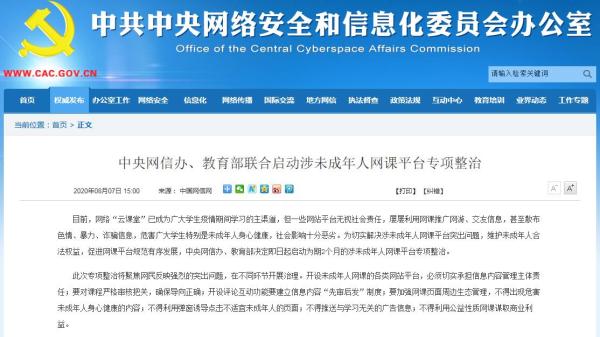public B channel(Class<? extends C> channelClass) { if (channelClass == null) { throw new NullPointerException("channelClass"); } return channelFactory(new ReflectiveChannelFactory<C>(channelClass));}ReflectiveChannelFactory еҸҚе°„зҡ„ж ёеҝғе®һзҺ°еҰӮдёӢпјҡ
public ReflectiveChannelFactory(Class<? extends T> clazz) { if (clazz == null) { throw new NullPointerException("clazz"); } this.clazz = clazz;}@Overridepublic T newChannel() { try { return clazz.getConstructor().newInstance(); } catch (Throwable t) { throw new ChannelException("Unable to create Channel from class " + clazz, t); }}е®һйҷ…дёҠе°ұжҳҜйҖҡиҝҮ NioServerSocketChannel еҲӣе»әдәҶ Channel еҜ№иұЎ гҖӮ
еҗҜеҠЁзұ»и®ҫзҪ® HandlerеҗҜеҠЁзұ»еҸҜд»ҘдёәеҗҜеҠЁжңҚеҠЎзұ»е’ҢзҲ¶зұ»пјҢеҲҶеҲ«и®ҫзҪ® Handler гҖӮ
иҝҷдёӘд№ҹжҳҜдёҖејҖе§ӢиҖҒ马еӯҰд№ netty жҜ”иҫғиҝ·жғ‘зҡ„ең°ж–№пјҢиҝҷдёӨдёӘжңүе•ҘеҢәеҲ«е‘ўпјҹ

ж–Үз« жҸ’еӣҫ
иҫ“е…ҘеӣҫзүҮиҜҙжҳҺ
жң¬иҙЁеҢәеҲ«пјҡ
пјҲ1пјүServerBoostrap дёӯзҡ„ Handler жҳҜ NioServerSocketChannel дҪҝз”Ёзҡ„пјҢжүҖжңүиҝһжҺҘиҝҷдёӘзӣ‘еҗ¬з«ҜеҸЈзҡ„е®ўжҲ·з«ҜйғҪдјҡжү§иЎҢ гҖӮ
пјҲ2пјүзҲ¶зұ» AbstractServerBoostrap дёӯзҡ„ Handler жҳҜдёҖдёӘе·ҘеҺӮзұ»пјҢдјҡдёәжҜҸдёҖдёӘжҺҘе…Ҙзҡ„е®ўжҲ·з«ҜйғҪеҲӣе»әдёҖдёӘж–°зҡ„ Handler гҖӮ
з«ҜеҸЈз»‘е®ҡжңҖеҗҺпјҢиҝҳжңүжңҚеҠЎз«Ҝзҡ„з«ҜеҸЈз»‘е®ҡ гҖӮжҲ‘们дёҠйқўеҸӘжҳҜз®ҖеҚ•зҡ„иҝҮдәҶдёҖдёӢпјҢиҝҷйҮҢеҒҡдёҖдёӢеұ•ејҖпјҡ
private ChannelFuture doBind(final SocketAddress localAddress) { //1. еҲӣе»ә channel 并注еҶҢ final ChannelFuture regFuture = initAndRegister(); final Channel channel = regFuture.channel(); if (regFuture.cause() != null) { return regFuture; } //2. еҲӣе»әе®ҢжҲҗеҗҺпјҢи®ҫзҪ®еҜ№еә”зҡ„йҷ„еҠ еұһжҖ§ if (regFuture.isDone()) { // At this point we know that the registration was complete and successful. ChannelPromise promise = channel.newPromise(); doBind0(regFuture, channel, localAddress, promise); return promise; } else { // Registration future is almost always fulfilled already, but just in case it's not. final PendingRegistrationPromise promise = new PendingRegistrationPromise(channel); regFuture.addListener(new ChannelFutureListener() { //3. ж·»еҠ зӣ‘еҗ¬еҷЁ @Override public void operationComplete(ChannelFuture future) throws Exception { Throwable cause = future.cause(); if (cause != null) { // Registration on the EventLoop failed so fail the ChannelPromise directly to not cause an // IllegalStateException once we try to access the EventLoop of the Channel. promise.setFailure(cause); } else { // Registration was successful, so set the correct executor to use. // See https://github.com/netty/netty/issues/2586 promise.registered(); doBind0(regFuture, channel, localAddress, promise); } } }); return promise; }}
жҺЁиҚҗйҳ…иҜ»
-
-
-
-
-
-
-
-
-
-
-
-
-
-
-
-
-
-
-
-
- Netty е®һжҲҳпјҡеҰӮдҪ•е®һзҺ°ж–Ү件жңҚеҠЎеҷЁпјҹ
- Netty е®һжҲҳпјҡеҰӮдҪ•е®һзҺ° HTTP жңҚеҠЎеҷЁпјҹ
- д»Җд№ҲжҳҜ2021е№ҙжңҖдҪізҡ„еҗҺз«ҜејҖеҸ‘жЎҶжһ¶
- еҰӮдҪ•е®һзҺ°еҮ зҷҫеҸ°SIPз»Ҳз«Ҝе®һзҺ°иҮӘеҠЁеҢ–йғЁзҪІ
- еҰӮдҪ•еңЁ Linux з»Ҳз«ҜжҹҘзңӢеӣҫеғҸ
- жө…и°ҲlinuxдёӢеҹәдәҺUDPжңҚеҠЎзҡ„иҙҹиҪҪеқҮиЎЎж–№жі•
- зІҪеӯҗжҳҜз«ҜеҚҲиҠӮзҡ„еҝ…еӨҮйЈҹзү©жҚ®иҜҙеңЁжҳҘз§Ӣж—¶жңҹ е…ідәҺз«ҜеҚҲзІҪеӯҗзҡ„з”ұжқҘ
- з«ҜеҚҲиҠӮдә”еҪ©зәҝзҡ„йўңиүІ з«ҜеҚҲиҠӮз»‘дә”иүІзәҝзҡ„ж„Ҹд№ү
- й©ұдә”жҜ’жҳҜд»Җд№ҲиҠӮж—Ҙ з«ҜеҚҲиҠӮзҡ„дә”жҜ’жңүе“Әдәӣ
- иҜҫеҗҺжңҚеҠЎз”іиҜ·зҗҶз”ұжҖҺд№ҲеҶҷпјҹ
















